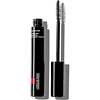What's inside
What's inside
 Key Ingredients
Key Ingredients

 Benefits
Benefits

 Concerns
Concerns

 Ingredients Side-by-side
Ingredients Side-by-side

Water
Skin ConditioningParaffin
PerfumingCopernicia Cerifera Cera
EmollientSteareth-20
CleansingCera Alba
EmollientAcacia Senegal Gum
MaskingAlcohol Denat.
AntimicrobialSteareth-2
EmulsifyingPotassium Cetyl Phosphate
EmulsifyingCetyl Alcohol
EmollientHydroxyethylcellulose
Emulsion StabilisingMadecassoside
AntioxidantSodium Polymethacrylate
Emulsion StabilisingSodium Dehydroacetate
PreservativeSodium Hyaluronate
HumectantSodium Chloride
MaskingSodium Bicarbonate
AbrasivePhenethyl Alcohol
MaskingPEG/PPG-17/18 Dimethicone
EmulsifyingArginine
MaskingPolysorbate 21
EmulsifyingPoloxamer 188
EmulsifyingPolyquaternium-10
Silica
AbrasiveSimethicone
EmollientPentylene Glycol
Skin ConditioningPanthenol
Skin Conditioning2-Oleamido-1,3-Octadecanediol
Skin ConditioningCaprylyl Glycol
EmollientDisodium EDTA
Methylsilanol/Silicate Crosspolymer
Skin ConditioningCitric Acid
BufferingPotassium Phosphate
BufferingPotassium Chloride
CI 77491
Cosmetic ColorantCI 77492
Cosmetic ColorantCI 77499
Cosmetic ColorantCI 75470
Cosmetic ColorantCI 77007
Cosmetic ColorantCI 77891
Cosmetic ColorantCI 77510
Cosmetic ColorantMica
Cosmetic ColorantWater, Paraffin, Copernicia Cerifera Cera, Steareth-20, Cera Alba, Acacia Senegal Gum, Alcohol Denat., Steareth-2, Potassium Cetyl Phosphate, Cetyl Alcohol, Hydroxyethylcellulose, Madecassoside, Sodium Polymethacrylate, Sodium Dehydroacetate, Sodium Hyaluronate, Sodium Chloride, Sodium Bicarbonate, Phenethyl Alcohol, PEG/PPG-17/18 Dimethicone, Arginine, Polysorbate 21, Poloxamer 188, Polyquaternium-10, Silica, Simethicone, Pentylene Glycol, Panthenol, 2-Oleamido-1,3-Octadecanediol, Caprylyl Glycol, Disodium EDTA, Methylsilanol/Silicate Crosspolymer, Citric Acid, Potassium Phosphate, Potassium Chloride, CI 77491, CI 77492, CI 77499, CI 75470, CI 77007, CI 77891, CI 77510, Mica
Water
Skin ConditioningMica
Cosmetic ColorantCopernicia Cerifera Cera
EmollientGlycerin
HumectantOryza Sativa Cera
Skin ConditioningStearic Acid
CleansingButylene Glycol
HumectantPalmitic Acid
EmollientHydrogenated Olive Oil Stearyl Esters
Emulsion StabilisingGlyceryl Stearate
EmollientPolybutene
Synthetic Beeswax
Emulsion StabilisingAcacia Senegal Gum
MaskingVp/Eicosene Copolymer
Aminomethyl Propanediol
BufferingOzokerite
Emulsion StabilisingPhenoxyethanol
PreservativeHydrogenated Vegetable Oil
EmollientVp/Va Copolymer
Polyvinyl Alcohol
Stearyl Stearate
EmollientMaltodextrin
AbsorbentPanthenol
Skin ConditioningZeolite
AbsorbentActinidia Chinensis Fruit Extract
EmollientTropolone
Skin ConditioningPotassium Sorbate
PreservativeBiotinoyl Tripeptide-1
CI 77491
Cosmetic ColorantCI 77499
Cosmetic ColorantCI 77007
Cosmetic ColorantCI 75470
Cosmetic ColorantWater, Mica, Copernicia Cerifera Cera, Glycerin, Oryza Sativa Cera, Stearic Acid, Butylene Glycol, Palmitic Acid, Hydrogenated Olive Oil Stearyl Esters, Glyceryl Stearate, Polybutene, Synthetic Beeswax, Acacia Senegal Gum, Vp/Eicosene Copolymer, Aminomethyl Propanediol, Ozokerite, Phenoxyethanol, Hydrogenated Vegetable Oil, Vp/Va Copolymer, Polyvinyl Alcohol, Stearyl Stearate, Maltodextrin, Panthenol, Zeolite, Actinidia Chinensis Fruit Extract, Tropolone, Potassium Sorbate, Biotinoyl Tripeptide-1, CI 77491, CI 77499, CI 77007, CI 75470
Ingredients Explained
These ingredients are found in both products.
Ingredients higher up in an ingredient list are typically present in a larger amount.
Acacia Senegal Gum has skin soothing, thickening, and formulation stabilizing properties. It comes from the Acacia tree that is native to sub-Saharan Africa.
Ci 75470 is a bright-red pigment. It is AKA carmine.
Carmine is derived from insects such as the cochineal beetle. This ingredient has been used as a natural dye for over 2000 years.
This pigment is called Ultramarine blue lazurite. It gives a saturated blue color, but can be used to create other colors as well.
According to the manufacturer, it is usually made from kaolin, sodium sulfate, sodium carbonate, sulfur, and charcoal.
Ci 77491 is also hydrated iron III oxide. It's sole purpose is to give a red/pink hue to products.
Iron III oxides are classified as inorganic chemicals for coloring.
Synthetically created Ci 77491 is considered safer than those naturally found. This is because the synthetically created version may contain less impurities. Iron oxides are generally non-toxic and non-allergenic.
Learn more about CI 77491Ci 77499 is also hydrated iron III oxide. It is created from mixing red and black iron oxides. This helps give shades of darkness to a product.
Iron III oxides are classified as inorganic chemicals for coloring.
This ingredient comes from a palm tree native to Brazil. This ingredient is used to thicken texture and leaves behind a film when applied.
Mica is a naturally occurring mineral used to add shimmer and color in cosmetics. It can also help improve the texture of a product or give it an opaque, white/silver color.
Serecite is the name for very fine but ragged grains of mica.
This ingredient is often coated with metal oxides like titanium dioxide. Trace amounts of heavy metals may be found in mica, but these metals are not harmful in our personal products.
Mica has been used since prehistoric times throughout the world. Ancient Egyptian, Indian, Greek, Roman, Aztec, and Chinese civilizations have used mica.
Learn more about MicaPanthenol is a common ingredient that helps hydrate and soothe the skin. It is found naturally in our skin and hair.
There are two forms of panthenol: D and L.
D-panthenol is also known as dexpanthenol. Most cosmetics use dexpanthenol or a mixture of D and L-panthenol.
Panthenol is famous due to its ability to go deeper into the skin's layers. Using this ingredient has numerous pros (and no cons):
Like hyaluronic acid, panthenol is a humectant. Humectants are able to bind and hold large amounts of water to keep skin hydrated.
This ingredient works well for wound healing. It works by increasing tissue in the wound and helps close open wounds.
Once oxidized, panthenol converts to pantothenic acid. Panthothenic acid is found in all living cells.
This ingredient is also referred to as pro-vitamin B5.
Learn more about PanthenolWater. It's the most common cosmetic ingredient of all. You'll usually see it at the top of ingredient lists, meaning that it makes up the largest part of the product.
So why is it so popular? Water most often acts as a solvent - this means that it helps dissolve other ingredients into the formulation.
You'll also recognize water as that liquid we all need to stay alive. If you see this, drink a glass of water. Stay hydrated!
Learn more about Water